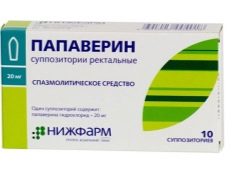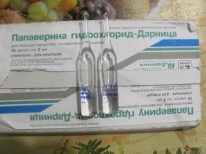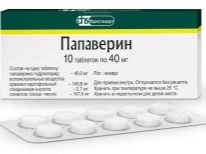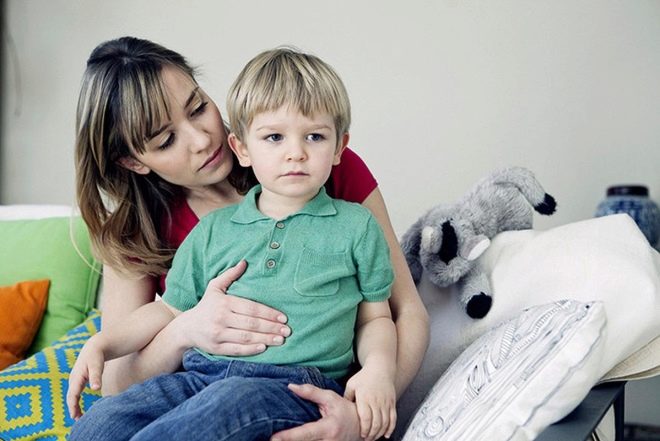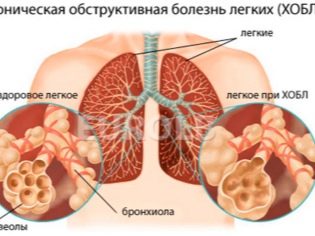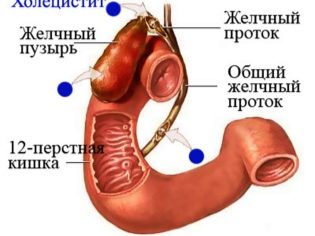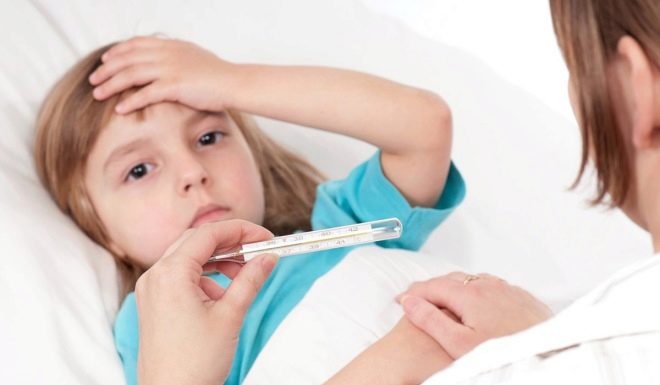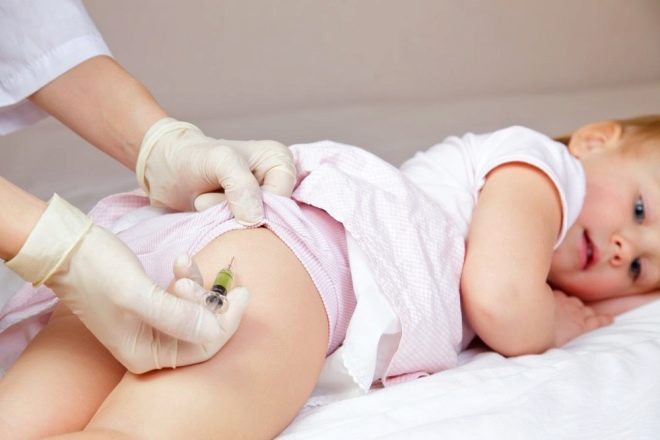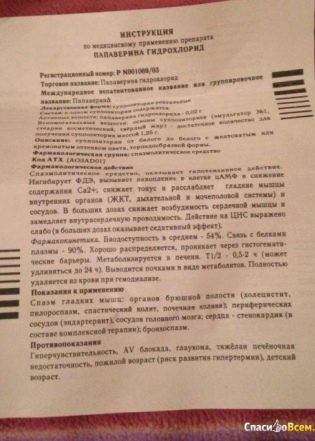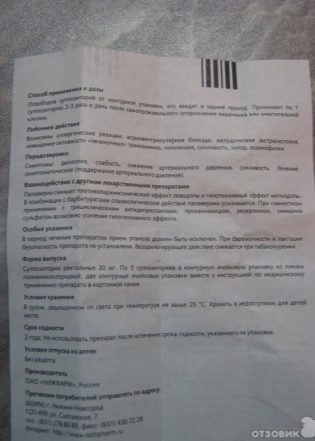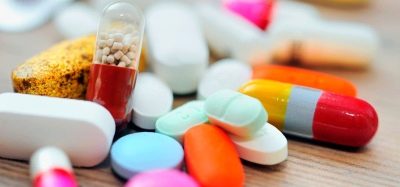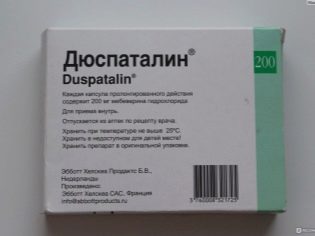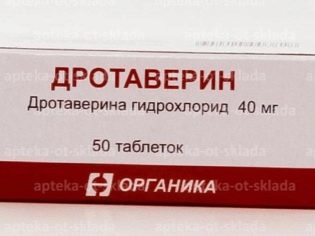"Papaverine" for children: instructions for use
"Papaverine" is a proven antispasmodic for years, which helps to get rid of various adverse spasms, as well as dilates blood vessels. This drug is especially popular in the practice of obstetricians and gynecologists, who prescribe it to expectant mothers to lower the tone of the uterus. In some cases, it is discharged in childhood.
Release form
"Papaverine" is produced by many pharmaceutical factories and is sold in pharmacies in three dosage forms.
- Rectal candles. They have a white-cream or white-yellowish tint and elongated shape. Such suppositories are sealed in 5-cell packs and sold for 10 candles in one pack.
- Pills. This form of "Papaverine" is characterized by a white color and a round shape. Sometimes on the pill there is a risk by which it can be divided into parts. One pack can contain 10, 20, 30 or more tablets.
- Solution for pricks. This is a clear liquid, packaged in 2 ml ampoules. Usually it is colorless or with a yellowish-greenish tint. One box contains 5 or 10 ampoules.
Composition
The action of all forms of medication is provided by the same substance - papaverine hydrochloride. For this reason, the drug can be called simply “Papaverin” or “Papaverine hydrochloride”. In addition, there are names with an additional word or abbreviation, for example, “Papaverine hydrochloride MS” or “Papaverine bufus”. All of them are variants of the same drug.
The amount of active ingredient in one suppository and in one milliliter of solution for injection is 20 mg, in one tablet - 10 mg (child form) or 40 mg. In addition to the active compound, the candle-like preparation contains only the fatty base, which gives the medication its form and facilitates its use. In tablets there are such auxiliary components as starch, stearic acid and sucrose. The composition of the injection solution additionally includes methionine, water and edetate disodium.
Operating principle
The main effect that any form of papaverine has is spasmolytic. It is associated with the effect of the drug on smooth muscles - under the influence of the medication, the muscles relax and their tone decreases. This helps in eliminating pain caused by spasms in organs that have smooth muscles (stomach, gallbladder, intestines, bronchi, urinary organs), and also dilates blood vessels, which leads to a decrease in blood pressure.
The action of the drug is not selective - that is, it simultaneously affects all target organs, which causes its widespread use.
It is also important to note that the active compound of the drug is obtained from the opium poppy (papaverine is one of the alkaloids of such a plant), but there are no narcotic effects on tablets, injections or candles.
Indications
"Papaverine" can be used in all cases of smooth muscle spasms, for example, when:
- bronchospasm;
- pylorospasm;
- colitis with severe spastic pain;
- vascular spasms in the brain or in peripheral tissues;
- cholecystitis or cholelithiasis (to eliminate biliary colic);
- irritable bowel syndrome;
- spasms in the bladder, urethra, or kidneys (renal colic).
Another reason for the appointment of "Papaverine" is the increased body temperature, in which the vessels spasm, causing the skin of the child's hands and feet to be pale and cool. This fever is called “white” and is dangerous to the body of children, since it is characterized by the risk of overheating of the internal organs, including the brain.
To reduce the temperature in such cases, the so-called lytic mixture or “triad” is required - a combination of three drugs that act together and help quickly improve the patient's condition. One of them is an antispasmodic drug, which may be Papaverin. The other two drugs are antipyretic groups (Ibuprofen, Analgin, Paracetamol) and antihistamines (Suprastin, Dimedrol).
From what age is prescribed?
The injection form of the drug is contraindicated up to six months, so it is not used for newborns. Tablets "Papaverin" in the infant dosage can also be given to infants from 6 months. Wherein medicine tablets for adults is better for kids not to useSince the dose of the active substance in it is too large, and it is very difficult to divide the drug into small pieces corresponding to children's dosages.
In the instructions for suppositories, you can see restrictions of up to 1 year or the mark “children's age” in the “contraindications” clause, but in practice such “Papaverine”, like other forms, can also be used from 6 months of age.
Contraindications
"Papaverine" is not used for hypersensitivity to this drug, as well as atrioventricular blockade. In addition, this medicine is not used for serious violations of liver function and glaucoma.
If the child suffered a head injury, his kidneys or endocrine organs are affected, treatment with Papaverine requires caution.
Side effects
Due to the use of “Papaverine”, the following can occur:
- allergic reaction;
- reduced blood pressure;
- extrasystoles;
- AV blockade;
- constipation;
- sleepiness;
- more eosinophils;
- increased liver enzyme activity.
Instructions for use
Tablets need to be swallowed with clean water. Usually, the medication is taken when necessary (if spastic pains have appeared), but not more than 3-4 times a day. Food does not affect the effect of the drug, but for painful sensations in the organs of the digestive system, it is best to drink Papaverine 15-30 minutes before meals (as the child calmly eats).
Candles are removed from the cell packaging and injected into the rectum. Before using this form of papaverine, the child must go to the toilet on their own or with an enema. "Papaverine" in solution can be administered subcutaneously or intramuscularly, as well as intravenously. The way to use this form is determined by the doctor, taking into account the condition of the baby. Neurologists also prescribe an electrophoresis injection.
One-time dosage of "Papaverine" for children is primarily affected by age:
- an infant older than 6 months and up to the age of two should be prescribed 5 mg of this medication;
- if the child is 2-4 years old, then he is also given 5 mg of the active substance, but sometimes the dose per dose is increased to 10 mg;
- at the age of 5-6 years old, a child receives 10 mg of “Papaverina” at a time;
- if the patient is 7-9 years old, the drug is given in 10 mg, sometimes increasing the dose to 15 mg;
- in 10-14-year-old age, a single dose is 15-20 mg;
- From the age of 15, an adult dosage of the drug can be given at a time - that is, 40-60 mg.
The duration of treatment of "papaverine" is affected by the rate of disappearance of abdominal pain and other spasms. If the condition is acute, then the drug is usually taken 2-5 days, and in the treatment of chronic diseases it can be prescribed for a week or longer.
Overdose
Excess doses of Papaverine can cause weakness, low blood pressure, drowsiness, and other side effects.Symptomatic therapy is used to treat overdose.
Drug interaction
Under the influence of "Papaverine" increases the effectiveness of levodopa preparations. The antispasmodic effect of the drug will be more pronounced if it is combined with barbiturates. If tricyclic antidepressants, quinidine, reserpine, or procainamide are given at the same time, the patient may develop hypotension.
Terms of sale and storage
"Papaverine" in candles and tablets are sold without a prescription, and the solution for injections - after submitting a prescription from the attending physician. The price of the medication is affected by the dosage form, manufacturer and volume of the package. For 10 suppositories you need to pay an average of 40-80 rubles, for 10 tablets - 7-10 rubles, and for 10 ampoules - from 30 to 70 rubles. Store preformed tablets should be at a temperature of up to +25 degrees, other forms - in a cooler place. “Papaverina” shelf life in candles and injections is 2 years, in solid form - 3 years.
Reviews
There are many positive reviews about using Papaverina, in which the drug is called effective, affordable, safe and inexpensive. Among the advantages of candles also note the painless use, lack of chemical additives, ease of use in kids.
Analogs
If "Papaverine" is used in a lytic mixture, then it is most often replaced by "But-Shpoy." This medicine is available in solution for injections and in tablet form. It is used in children older than a year, if you need to quickly bring down the heat, as well as constipation, dry cough, toothache, and so on.
Instead of “No-shpy”, analogs with the same active ingredient are in demand, for example, “Drotaverin”, “Spasmol”, “Spasmonet” or “Droverin”. In children older than 12 years with biliary and intestinal colic, you can apply "Duspatalin”, And for colic babies, they use“ Bobotik ”or“ Espumisan Baby ”drops, as well as“ Plantex ”.
The official instructions for use of the drug are given in the following video.
